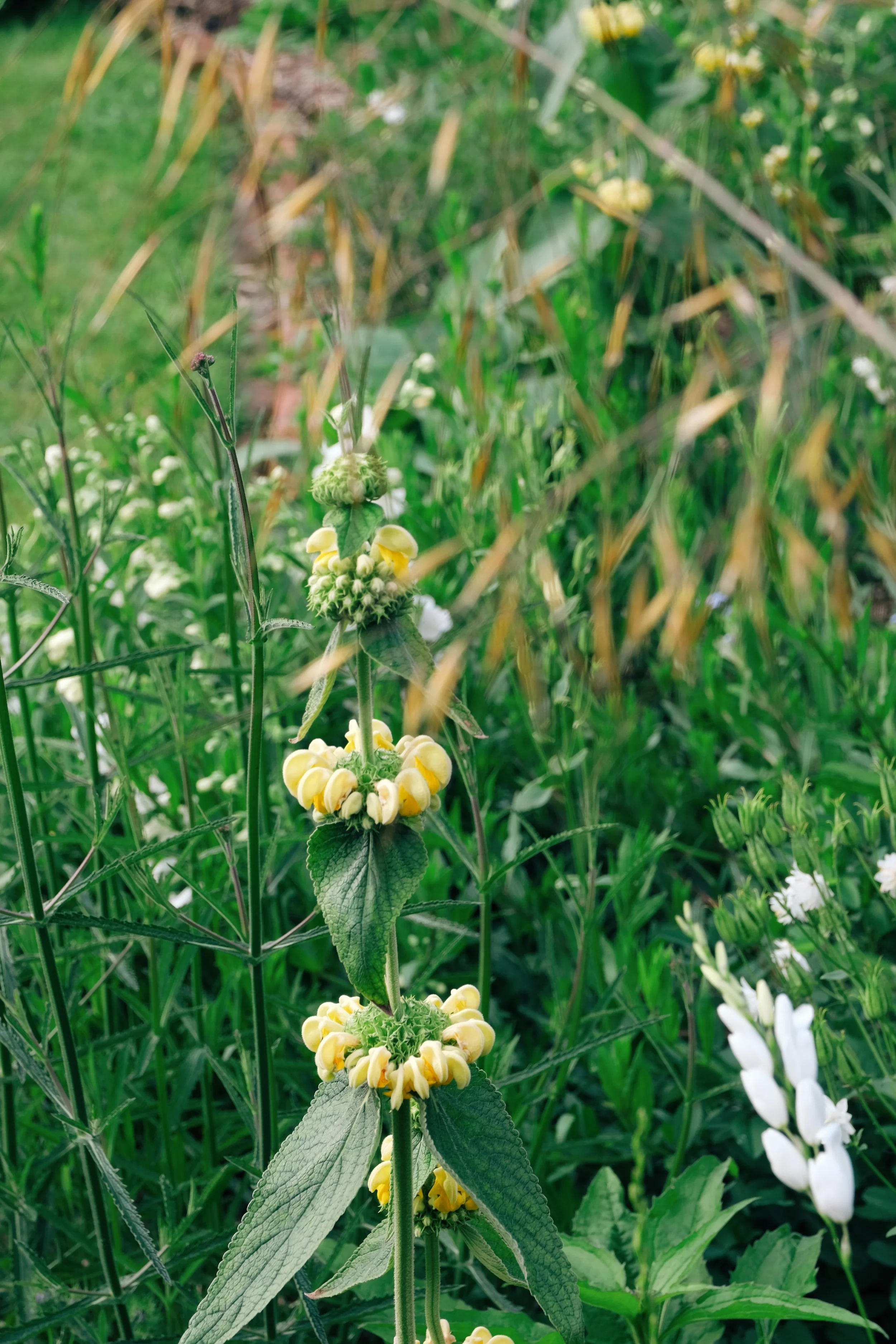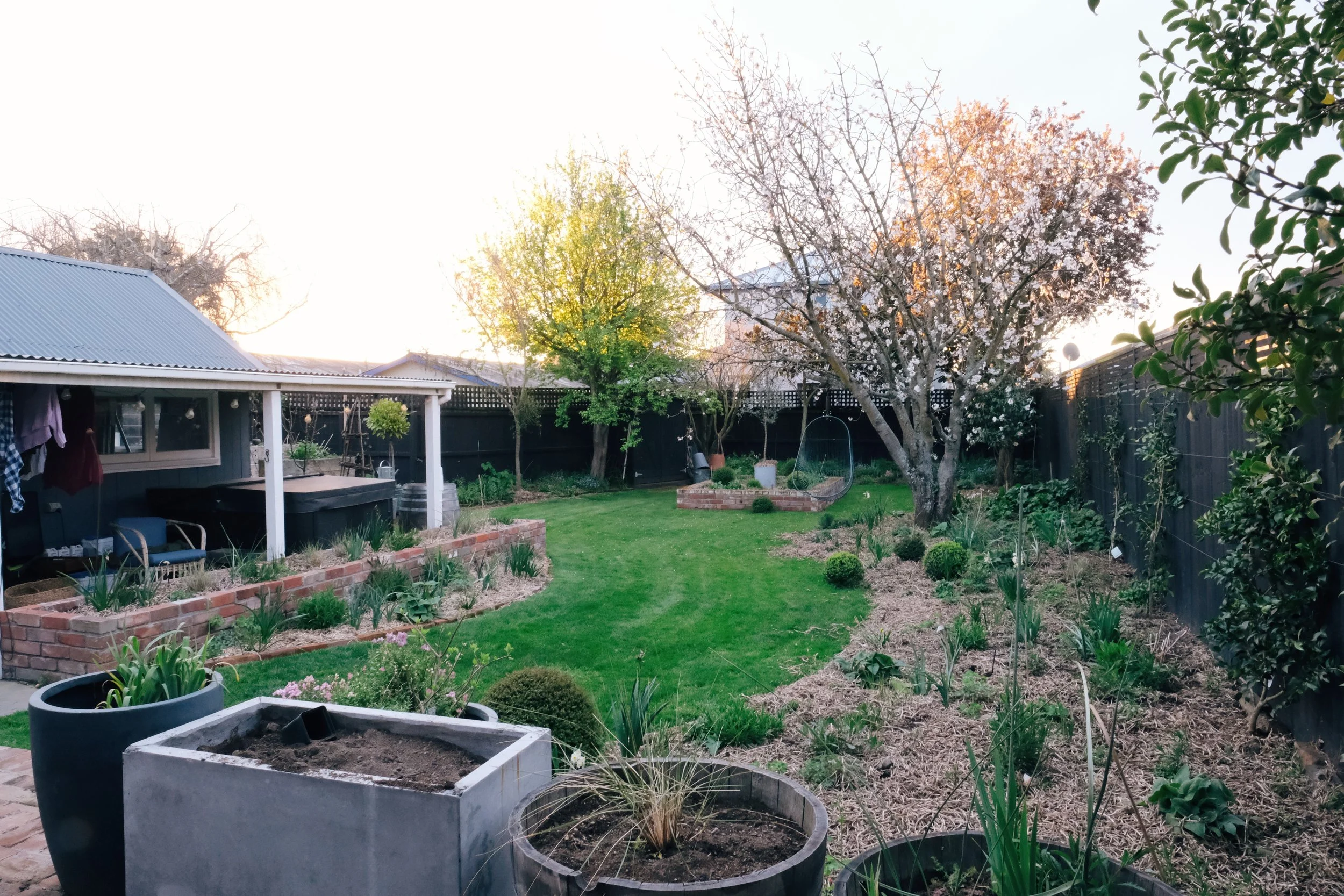A Garden in Progress - Part Two
/Earlier in the year, I shared the story of my garden and I so far, reflecting on the changes made over 5 years and its admirable tolerance of my learning curves. My Linwood backyard has taken me on a journey of gardening discovery, and in the process, I have rid it of boring static evergreen planting in pursuit of a wild, seasonally responsive refuge.
My last report in March revealed our latest changes that reclaimed lawn, introduced new raised planters and left you at the ‘fingers crossed’ moment of little plants mulched to their eyebrows awaiting winter and dormancy.
Winter came and it was a sodden one, to say the least. The regular flooding of the lawn (due to no stormwater system off our studio) led us to some troubleshooting and the introduction of a sump with a very reliable little pump and a very long hose meant we finally bid farewell to ‘Lake Linwood’ for good.
Early september 2022
Late November 2022
Now here, officially in early summer, I sway in my hanging chair under the cherry tree marvelling at how generous plants really are.
While I still agree that gardening is mostly a long game, I no longer have those feelings of frustration that ‘everything takes so loooooong to grow and look good!’. This positive change in perspective is definitely owed to adopting the use of perennials that, given the right conditions, get straight down to business!
Where I was concerned that I hadn’t planted close enough together and that it would take years for my vision to come to fruition, I have been utterly thrilled at the fullness and immediate maturity that most of my planting has found in its first spring. Naturally, there are some issues and gaps that lurk at the edges of, what I feel is, a very strong start based on a beginner’s plan.
NOTABLE SUCCESSES
The scattering of Sisyrinchium striatum through the beds felt brave as I had never used this plant before. I was right to be attracted by its blue-green swords of foliage that remain year-round and its spikes of clustered butter-yellow flowers are proving to be a lovely foil to the softer, airier planting around them. As shared by one of my gardening gurus, after three years they start to die from the centre of their clumps and that is a good time to rip the whole plant out, leaving the edited self-seeded stock around them to take up the torch.
sISYRINCHIUM WITH gaura, ixia and verbena bonariensis
The soft grassy spears of muted green of the miscanthus can be seen bottom right. They added to the wildness and airyness of the planting.
After a brutal August cutback, I am enchanted by the softness provided by the rapidly growing grasses. The muted, silver-green of the Miscanthus sinensis ‘Morning Light’ is a lovely foil to the deeper greens around them and the two Stipa gigantea have already thrown up ethereal blooms atop very long sturdy stems. Their true moment of stardom will arrive this autumn as we slip into winter, but for now, I couldn’t be happier with their contribution to the chorus.
The islands of Phlomis russeliana are glowing at the moment having progressed from their green globed buds to now springing sturdy yellow petals with a leafy tuft on top. I’m a tad besotted with their graphic form despite the warnings of their imminent threat of garden domination. Yet another tough plant worth its weight in uncomplicated needs that will require strict monitoring. I’m rapidly discovering there are jobs involved with every silver lining.
phlomis russeliana with ixia and a wand of stipa gigantia flower
Phlomis russeliana with verbena bonariensis, ixia and summer perennials yet to flower.
HURDLES TO OVERCOME
The gaura, which I have worshipped here in public time and time again is simply not happy with my rich clay-based soil.
Ignoring all the advice clearly stating that they need full sun and free-draining earth, the specimens which I have forced into the position as a matrix plant are all ungraciously flopping and snapping off from the centre of the clump. This is in stark contrast to the ones planted in the raised brick planter that get the most sun and have better drainage, resulting in huge healthy specimens that are holding themselves up.
I have attempted to strongly clip back the ones in the ground to encourage vertical growing shoots, however, I suspect that I am going to need to replace them with something more suitable.
One great idea offered to me by an Instagram friend was the airy perennial Penstemon ‘Garnet’ with its long flowering, deep pink blooms, or perhaps I double down on Salvia nemorosa of which I currently have just a few plants growing. This would be a big change in the colour palette but at this stage, feels worth a go.
Early September 2022
Late november 2022
My sporadic planting of ixia was both a winner and a bit of a loser. As last year was my first with this plant, I didn’t pay enough attention to its flowering time which meant that the Ixia elvira ‘Duck Egg Blue’ didn’t bloom alongside the white and yellow aquilegia and Japanese irises as hoped. Instead, the white version (which I didn’t realise I had so much of) arrived just after and flopped to the floor absolutely everywhere. In contrast, the blue has arrived in the few weeks and is both sturdy and stunning as it floats through its neighbours.
I am now excited about the prospect of the seasonal shift into purples, pinks, rusts and blues dotted with yellow as my summer flowering perennials begin to reveal themselves. Echinacea, Verbena bonariensis, Sanguisorba officianalis, Knautia macedonica and Coreopsis ‘Moonbeam’ among others will be introducing a different flavour to my outdoor room. All this planting is aimed to be attractive but also drought tolerant and hasn’t really been tested yet with this wet tail to spring.
Time will tell and I look forward to sharing another update in a few months’ time.
This is an expanded version of the article featured in my Stuff ‘Homed’ gardening column - published online as well as in The Press, Dominion Post and other regional papers on December 8th 2022
All words and images are my own, taken in my home and garden in Christchurch, New Zealand unless otherwise captioned.










